Chickens can make a great addition to your permaculture garden or farm.
They can eat weeds and bugs around your farm. And in return, provide you with delicious free-range eggs.
But just like raising any type of animal, there’s a lot to learn before you buy your first chicken.
You want to make sure you’re providing them with the right environment. And that you can keep them safe and healthy.
Luckily, chickens are one of the most beginner-friendly animals to keep on the farm. Or even in the backyard!
We recommend most farmers start out with them before considering other larger animals. Like pigs, sheep, or cows.
Let’s discuss how chickens fit into a permaculture system. Plus, we’ll also lay out a step by step guide on how to keep permaculture chickens.
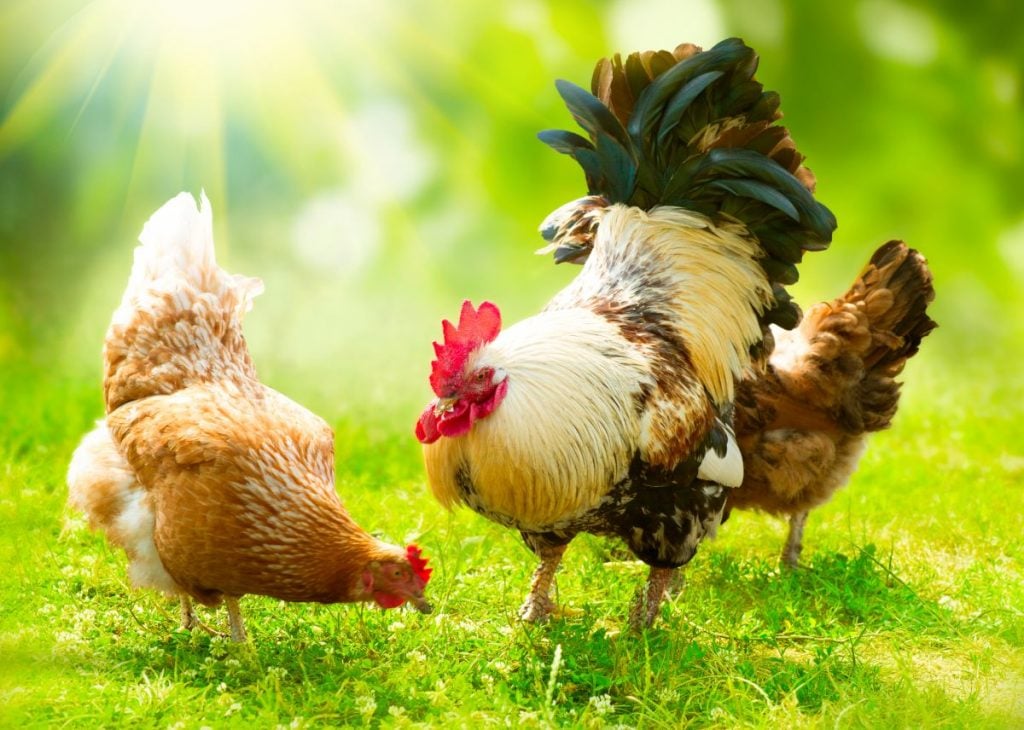
What is Permaculture?
Permaculture is an approach to agriculture that makes use of whole-systems thinking. It seeks to emulate how systems work in nature.
Permaculture is a way to care for the earth while also getting the resources that we need to survive or run a business.
If you aren’t familiar with permaculture, we recommend checking out this article – Permaculture Farming: The Ultimate Guide and Examples.
How Do Chickens Fit Into Permaculture?
Chickens and permaculture actually go together quite nicely.
So how do chickens play a role in permaculture systems?
And what is the permaculture way to raise chickens?
Chickens can create a perfect closed-loop cycle on a permaculture farm.
They eat garden waste and scraps from the kitchen. And in return, they supply you with meat and eggs.
Chickens also produce manure which is used to fertilize crops.
In turn, the crops eventually turn into more kitchen scraps and garden waste that feed more chickens.
This is a waste-free process that can continue to repeat indefinitely.
If you have at least one rooster in your flock, you can also have chicks. So eggs don’t just produce food for us, but can continue to grow your chicken operation as well.

Pros and Cons of Keeping Permaculture Chickens
Before you go out and buy a whole flock of chickens, it’s important to assess everything that comes along with them. Both the good and the bad.
Pros:
- Quality eggs and meat. The quality of the products that you get from your own permaculture chickens will far exceed anything that you can buy in store. Both in terms of freshness and taste.
Plus, they’re also more nutritious. - Additional garden resources. As we alluded to above, chickens add a back to the rest of your permaculture garden or farm.
They eat up scraps and weeds, and produce rich compost to fertilize your crops with. - They’re fun. Chickens can be like pets. You’ll quickly learn the unique personality traits and quirks of all of your chickens. It’s fun to interact with them. Or to just watch them go about their day.
- More sustainable and ethical. Chickens are conventionally grown in cramped and inhumane conditions.
Laying hens may spend their entire life in a tiny cage and barely have the ability to stand up or move around. Meat chickens are often crammed into coops by the thousands.
In either case, traditionally-raised chickens may go their entire life without seeing grass.
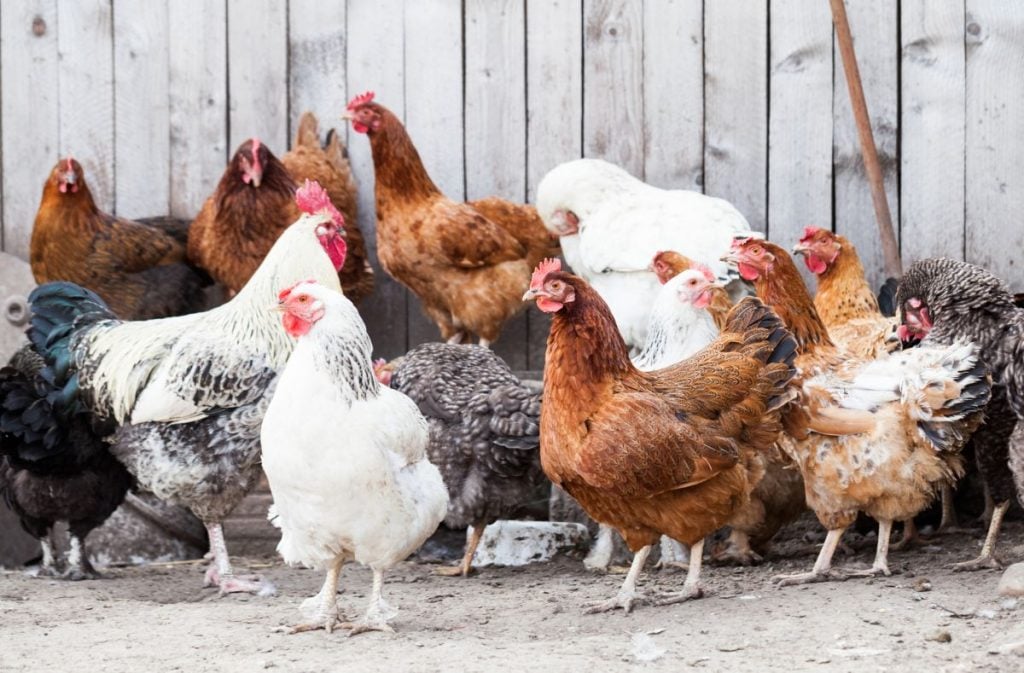
Cons:
- They’re noisy. Especially if you have a rooster, you’ll get woken up bright and early to the sound of chickens. If you have several acres, this isn’t a huge deal.
But if you’re raising backyard chickens, you might make enemies of your neighbors. - They can be expensive. Buying or building a chicken coop will cost you a lot of money initially. If you don’t have enough leftover food scraps to feed your chickens, you’ll need to buy feed.
If you’re feeding them high-quality organic feed, it can get expensive.
This is particularly true in the winter; When there’s less fresh plant matter available, you’ll likely have to supplement the diet of your chickens. - Turnover. Most breeds of chickens will only reliably lay eggs for two or three years. So if you’re raising chickens just for eggs, you’ll need to constantly be replacing your flock.
Hens that stop laying will need to get butchered.
If you don’t have the heart for that, you’ll have a lot of chickens to feed for the next decade that aren’t producing anything. - Poop. As with raising any animal, chickens come along with a daily supply of poop. While chicken manure is great for your garden, it also smells.
If you’re too squeamish to regularly clean out your coop, you may want to stick with growing vegetables.
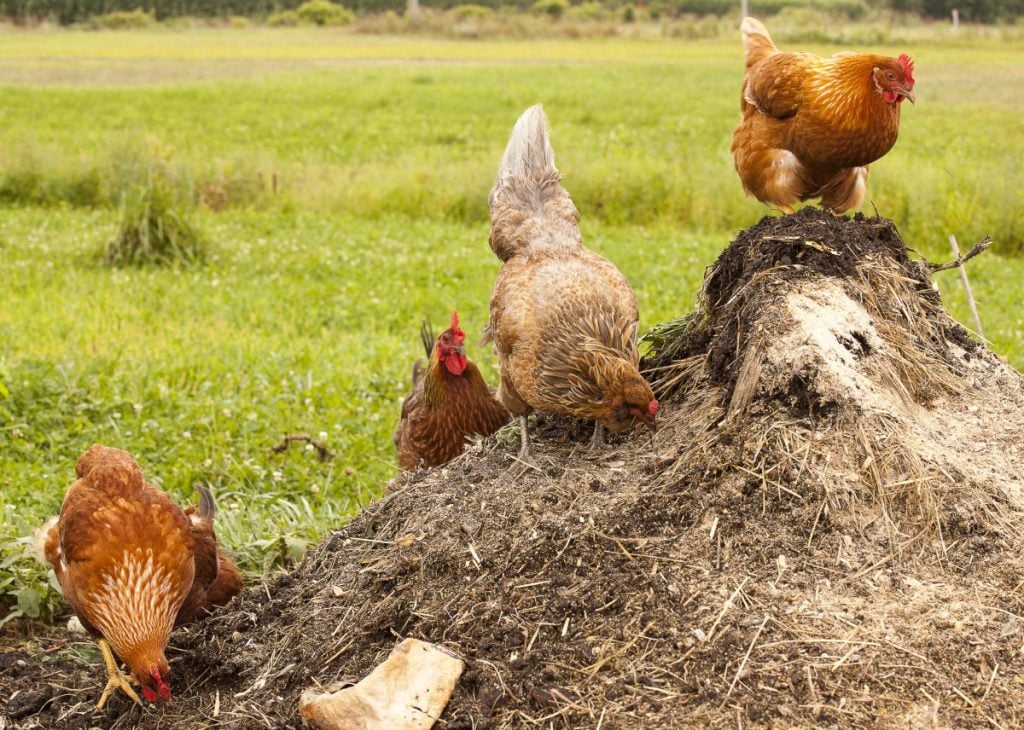
How Many Chickens Should You Keep?
If you’re just keeping chickens for your personal use, three to six is a good number. On average, an adult hen will lay a couple of eggs every three days.
But the number of chickens that you keep will depend on what your goal is.
Are you looking to raise chickens for meat, eggs, or both?
Do you just want to feed your own family? Or are you planning to sell your permaculture chicken products as a business?
In any case, chickens are social creatures. We don’t recommend just keeping one. Most people suggest having at least three chickens in your flock to meet their social needs.
For those wanting to raise chickens as a business, it’s best to start with an end goal and work backwards.
See our article How to Make Money Homesteading: 48 Ways for other methods you can use to make your farm profitable.
For example, if you want to earn a certain dollar amount per year. Think about how much you will charge per egg.
Then figure out how many dozen eggs you’ll need to sell each year to meet your goal. Then you can work backwards and figure out how many chickens you’ll need.
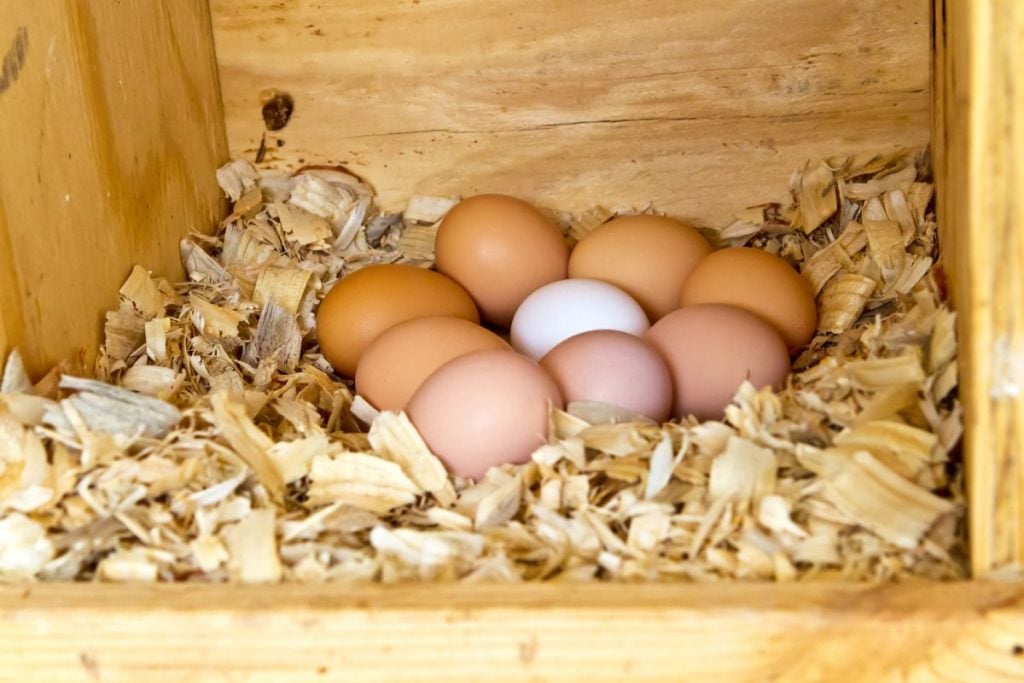
Step by Step Guide to Keeping Chickens
There is a lot that goes into getting started with raising permaculture chickens. But this step by step guide will provide you with the basics you’ll need.
Step 1: Check Whether Keeping Chickens Is Allowed In Your Area
Do you need permission to keep chickens in your garden?
You had better check before you go to all the work of getting them!
If you live in the country, then you’re most likely fine. This is more of an issue within city limits.
More and more cities are allowing people to keep backyard chickens. But there are still many places where raising chickens is against the bylaws.
There may also be certain stipulations. For example, most places will allow you to have hens but not roosters. You may also be limited to bantam (smaller) breeds of chickens.
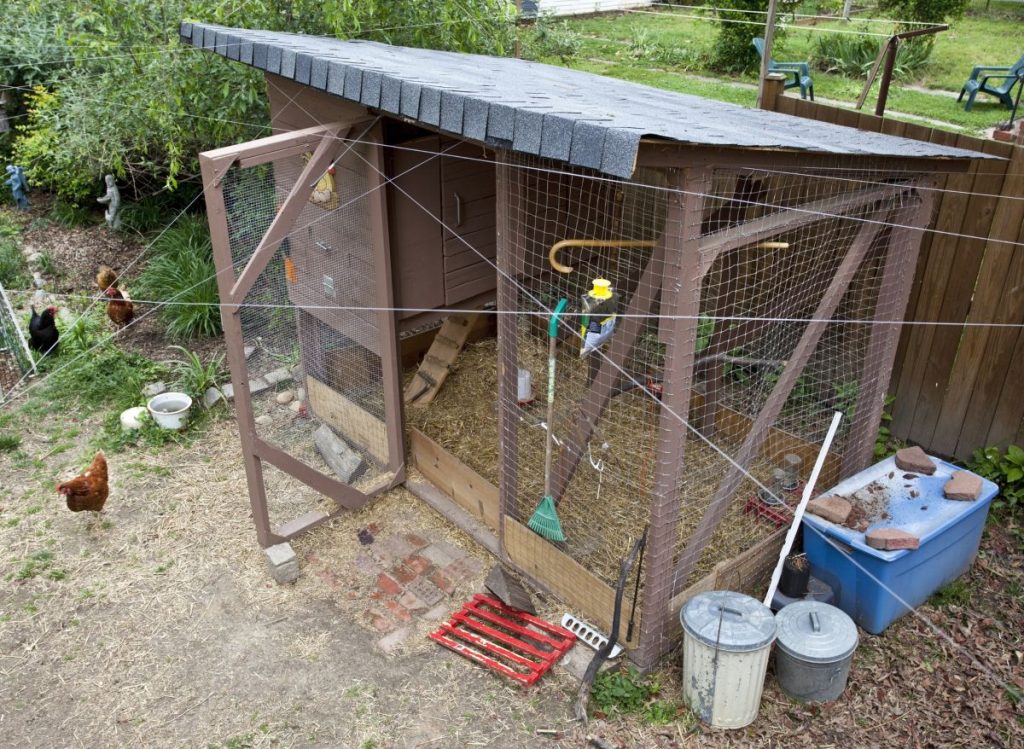
Step 2: Select Your Habitat
Decide where your chickens are going to go, and how you’re going to house them.
Are you going to keep your chickens in a large, permanent coop? Or are you going to have a mobile chicken tractor that you can move to various places around your property?
What kind of habitat will you allow your chickens to forage in around your property?
We often associate chickens with large open pastures. But they actually prefer to graze in grassy areas with lots of plant cover and diversity.
You might be wondering “will free range chickens ruin my garden?” The answer is unfortunately yes. Chickens can quickly destroy a garden.
Especially while plants are young or still seedlings. So it’s best to fence off your vegetables or find some other way to separate them from your chickens.
Your habitat should suit more than just your chickens. See our article How to Create a Permaculture Homestead in 8 Steps for more information.
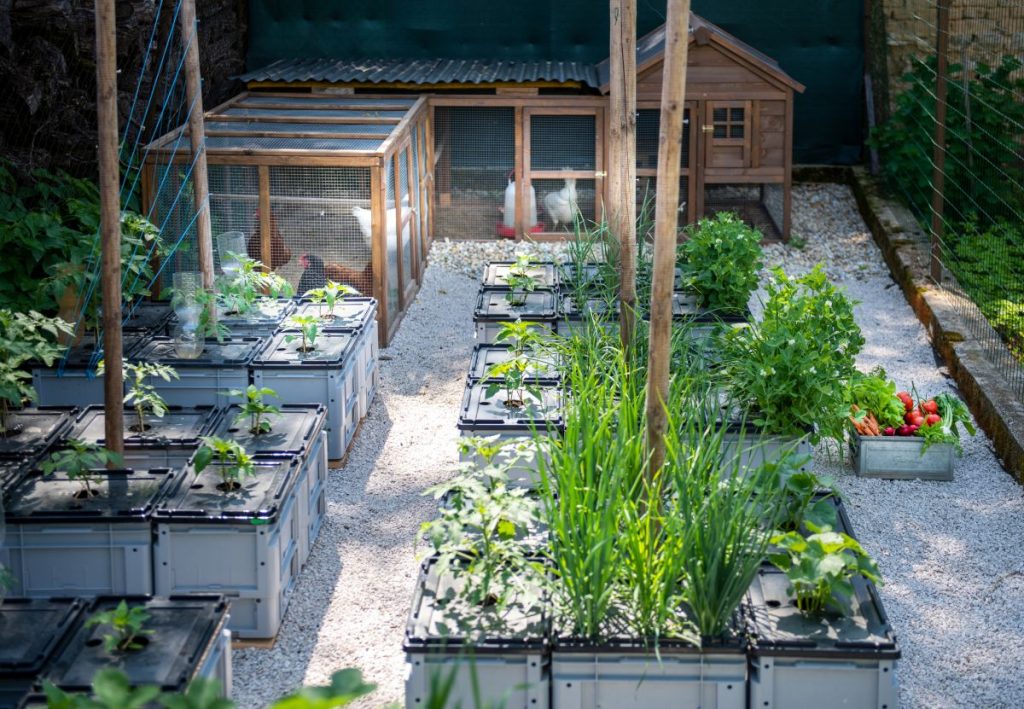
Step 3: Select Your Flock Size
When figuring out how to start a flock of chickens, one of your main decisions will be how many birds you want to keep.
As we mentioned above, your flock size will depend on your goals and needs.
Start by determining why you want to incorporate chickens into your permaculture design, then work backwards to determine how many chickens you’ll need to accomplish that goal.
For example, you may only need a few chickens if all you want them for is laying eggs.
Step 4: Allow for Regular Chicken Activity
Chickens like to move around and forage a lot.
Your birds will generally roam up to 300 feet (100 meters) away from their coop. Over the course of a day, chickens can walk a mile or more.
Chickens also spend up to half the day foraging for food. So give them lots to scratch and peck at.
It’s also important for chickens to take regular dust baths.
It keeps their feathers in good condition and keeps insects off of them. So make sure they have access to some fine sand or dirt.

Step 5: Monitor Chicken Health
At first, it may be hard for you to tell what is normal or not for your chickens. But over time, you’ll get a good feel for it.
Watch for any obvious signs of illness. Like chickens developing sores on their skin, combs, or feet. Or if any of your birds start to lose a lot of feathers.
Also keep an eye out for behavioral issues like shaking or tremors.
In the beginning, you’ll probably want to call a veterinarian if you have any problems rather than trying to diagnose and cure the problem yourself.
Step 6: Chicken Socialization and Behavior
Chickens will naturally establish their own pecking order. Usually they will be fine. But if any of your chickens are constantly fighting or hurting each other, you may need to separate them.
If you have multiple roosters in particular, this can become a problem.
You may also run into hens that become broody. This means they’ll want to spend all day sitting on their eggs. And they’ll be very territorial, biting or pecking at you if you try to take their eggs.
You can stop a hen from being broody by removing them from their nest and removing the nesting material. Or you can separate her in a cage for a few days.
Alternatively, take advantage of this natural instinct and swap out any unfertilized eggs for some fertile ones and let her hatch them.
Step 7: Breeding chickens
For your permaculture chicken operation to be truly sustainable, you’ll need to breed your own chickens. That way you can continue to grow your flock. Or just replace any birds that you harvest for meat.
As long as you have at least one rooster per 20 hens, that should be enough to get plenty of fertilized eggs. There isn’t anything special you have to do. Just let nature run its course.
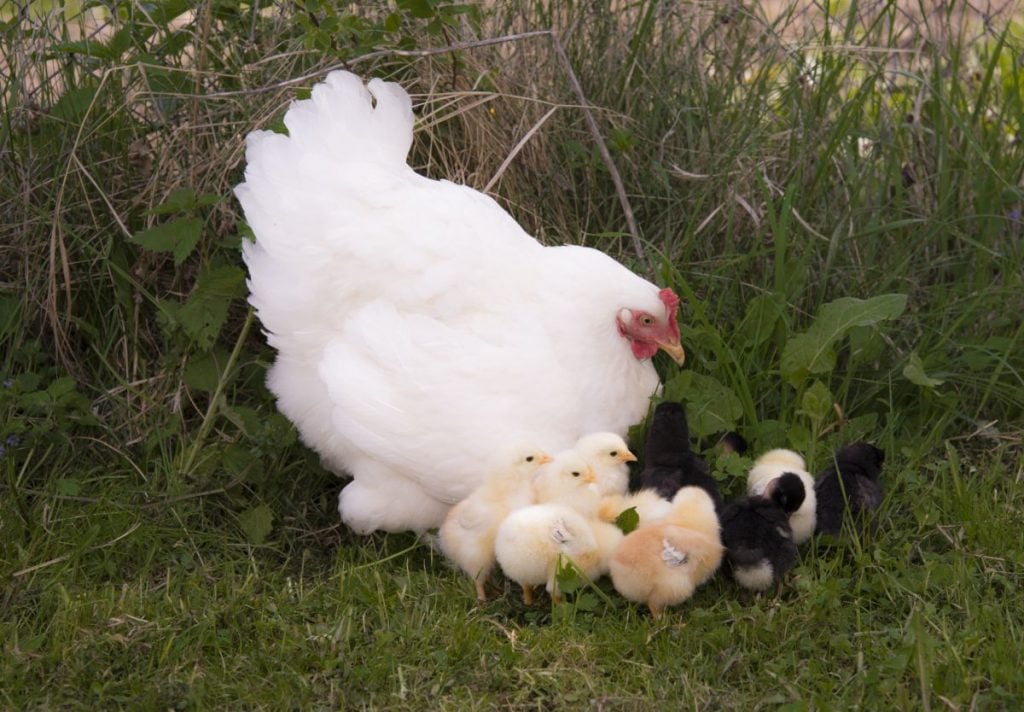
Step 8:Maintaining a Good Chicken Diet
What permaculture plants do chickens eat? The truth is, chickens aren’t very picky. They will eat pretty much anything you give them.
Chickens are a great way to get rid of any weeds that you pull out of your garden. They love to eat dandelion, burdock, and lamb’s quarter.
Chickens even enjoy stinging nettles. Don’t worry, they don’t get stung by them like we do.
Your chickens will forage in tall grass or even forests on your property. You can also let them eat cover crops like clover, grains, alfalfa, and mustard.
Many people don’t know, but chickens will also eat meat products as well. If you go fishing or hunting, you can feed the entrails and other waste products from animals to your chickens.
You can even feed roadkill to your chickens. Just make sure to open the carcass up so they can easily access the insides.
Any insects and pests you find around your garden can get fed to chickens as well.
Some permaculture farmers will even specifically grow maggots or larvae to feed to their chickens.
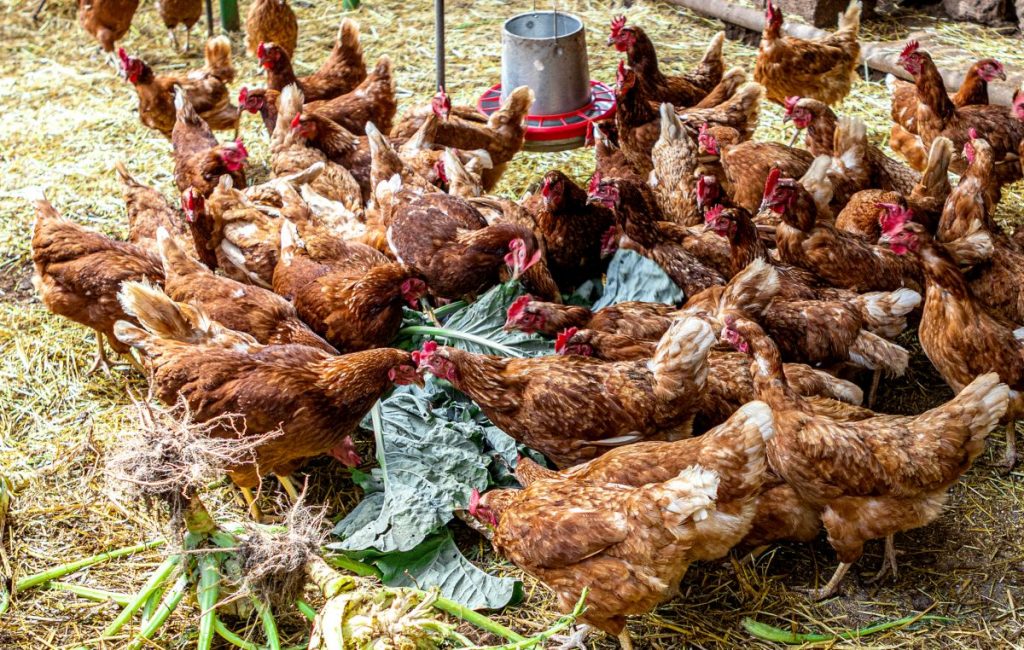
Step 9: Controlling Predators
Humans find the meat and eggs of chickens delicious. But unfortunately, so do lots of other animals.
Everything from foxes and skunks to hawks and owls will be eyeing your permaculture chickens. Even snakes have been known to take eggs or small chicks.
Quality fencing is the best way to prevent your chickens from becoming some other animal’s dinner. You’ll also want to keep your chickens indoors in their coop or a barn at night.
You might even want to get a dedicated guard dog to watch your flock.
Keeping your chicken area clean and removing any uneaten food. This will also help prevent unwanted scavengers from getting attracted to the area.
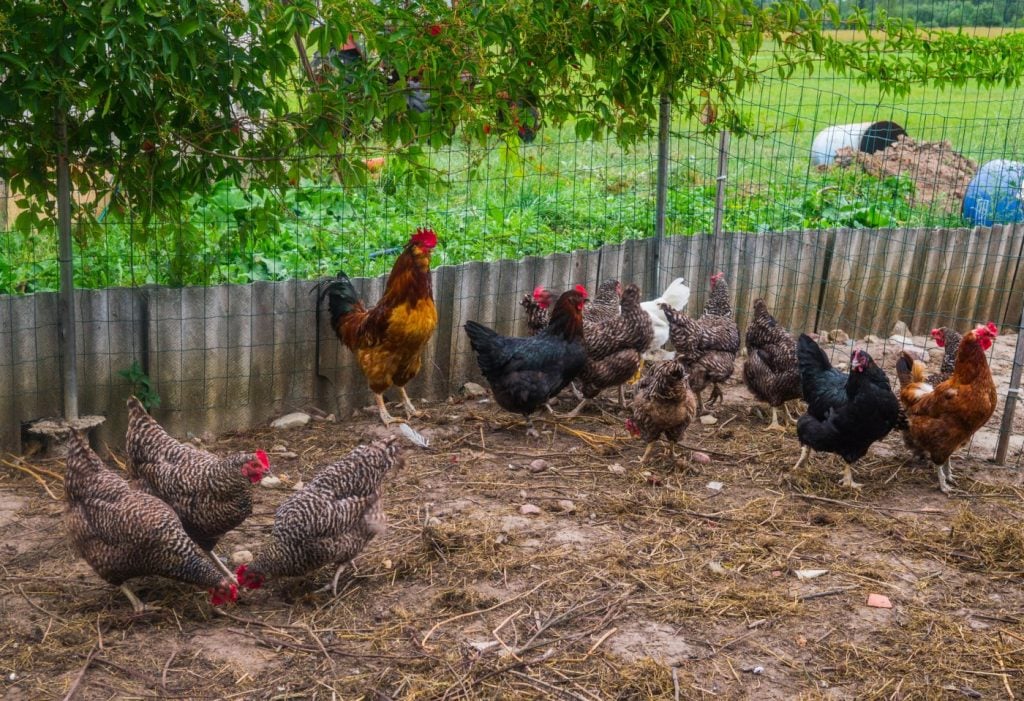
Troubleshooting Common Chicken Issues
Here are some common issues you may run into with your chickens, and how to fix them.
1. Broody Hens
As we mentioned earlier, sometimes chickens will go broody. This means they get very protective and territorial over their eggs.
If your eggs are fertilized and you want them to hatch, you can simply leave your hen on them.
If you want the eggs the hen is sitting on, you’ll need to separate her from them. Either putting her in a separate cage, or removing the nesting area.
Alternatively some people put ice cubes or a frozen water bottle in the nest. Cooling down a chicken can break their broodiness.
It also just makes it uncomfortable for them to sit on the nest.
Ready to diversify? Our article 21 Of The Best Small Scale Farming Ideas can help add other sources of food and revenue to your farm.
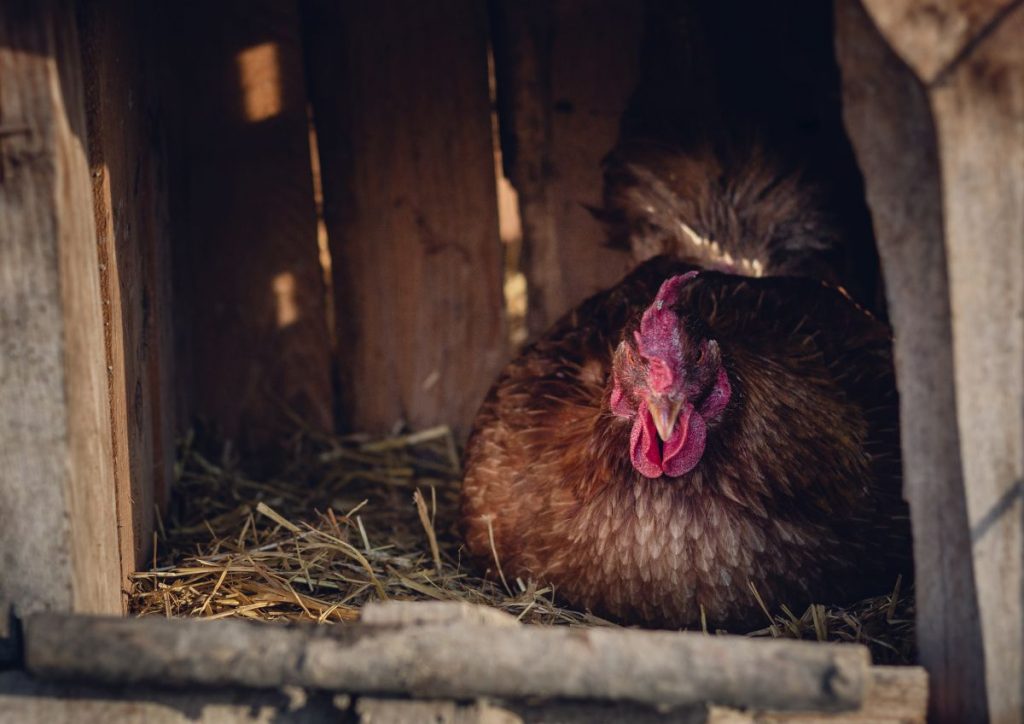
2. Chickens Pecking at Each Other
A little bit of establishing a dominance hierarchy among chickens is normal. Especially if you are introducing new chickens to your flock, you should expect them to establish a pecking order.
But this process should only last a day or two. If your chickens are becoming bloody or starting to lose feathers, then something is wrong.
Usually the reason for this is that your chickens get stressed. Most commonly it’s because they don’t have enough space.
Try expanding the size of your chicken run or giving them more time to forage outdoors.
If you notice that it’s one chicken in particular doing all of the bullying, you can separate them from the flock for a couple of days.
When you return them to the flock, they should be at the bottom of the pecking order and their aggression should stop.
3. Soft Egg Shells
Sometimes hens can lay eggs with very soft shells. The eggs may be broken by the time you get to it, or there may be no shell at all.
Laying the occasional soft shell can be normal and not a cause for concern.
However, if your hens are constantly laying soft-shelled eggs, then there is likely a nutrition deficiency. Most commonly the hens are not getting enough calcium.
The most common supplement for this is to add crushed oyster shells to your chicken’s diet. You should be able to find grit containing added calcium at most feed stores.
4. Egg Bound Hens
You may notice a hen waddling around. They may go in and out of their nesting box without laying an egg, or they may stop eating and drinking
If you feel the abdomen area of your chicken and you can feel an egg-shaped lump, then your chicken is likely egg bound.
This means an egg has got stuck somewhere on the way out. Being egg-bound can be fatal for a hen if not treated.
You can try giving the hen a warm bath. In some cases this might loosen the muscles and allow the egg to pass. If the egg still doesn’t pass, you will need to see a vet.
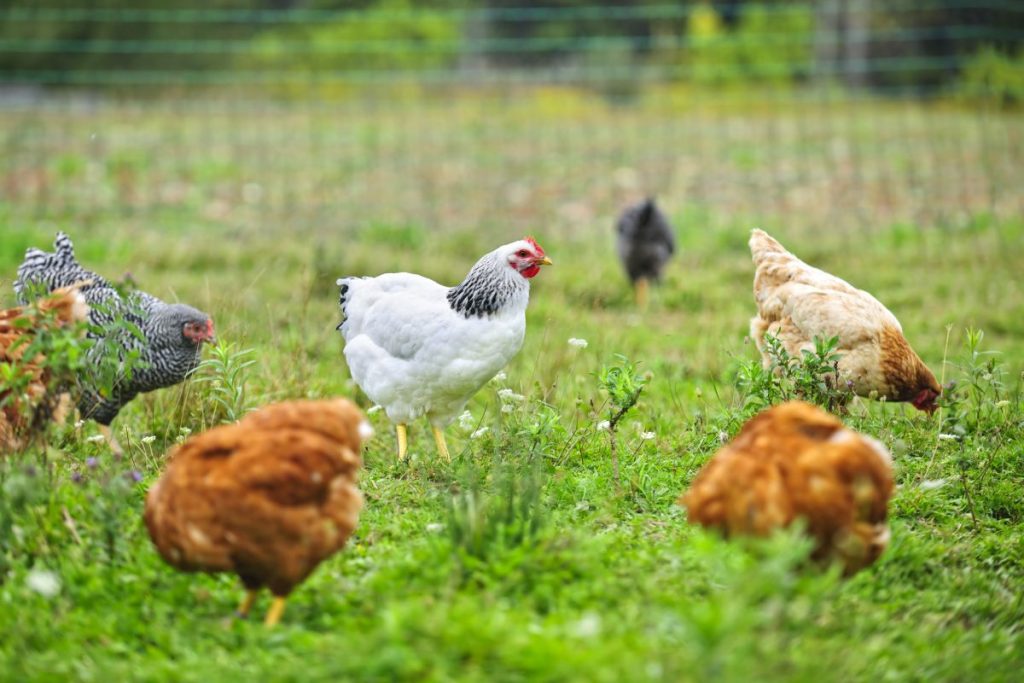
5. Mites, Lice, and Worms
Chickens can become infected with parasites. There are various products like pestene powder and deworming medication that can be used to treat this.
However, if you’re raising your permaculture chickens fully organic, you may want to look into more natural alternatives first.
Diatomaceous earth is one of the most common natural products to deal with these pests. It’s basically a fossilized form of algae.
On the outside, you can dust your chickens with diatomaceous earth to remove lice and other pests from their legs and feathers.
When fed to chickens, diatomaceous earth is abrasive and will help push worms out of your chicken’s digestive system.
Many people also swear by giving their chickens apple cider vinegar as a preventative treatment. This supposedly helps boost your chicken’s immune system.
(Although we haven’t seen scientific studies to back it up.)
Final Thoughts
Chickens and permaculture go together like eggs and toast!
Adding chickens to your existing permaculture garden or farm adds biodiversity and makes for a more sustainable ecosystem.
You can feed plant scraps and waste products to your chickens. In return, they provide manure that can be used to fertilize your crops and increase yield.
Plus you get eggs and meat from them as well.
Before getting chickens, make sure you evaluate the pros and cons. Also make sure that keeping chickens is legal in your area.
Once you’ve prepared everything your flock needs, it’s time to buy some chicks. Or get ahold of some fertile eggs and hatch them yourself.
To learn more about a permaculture lifestyle, visit our Permaculture Resource Hub.
